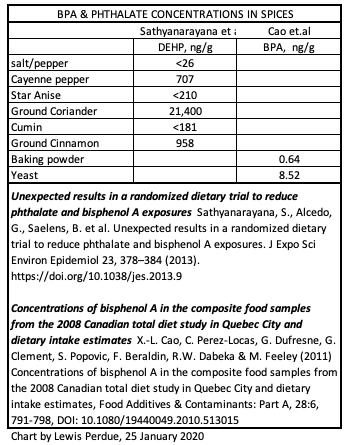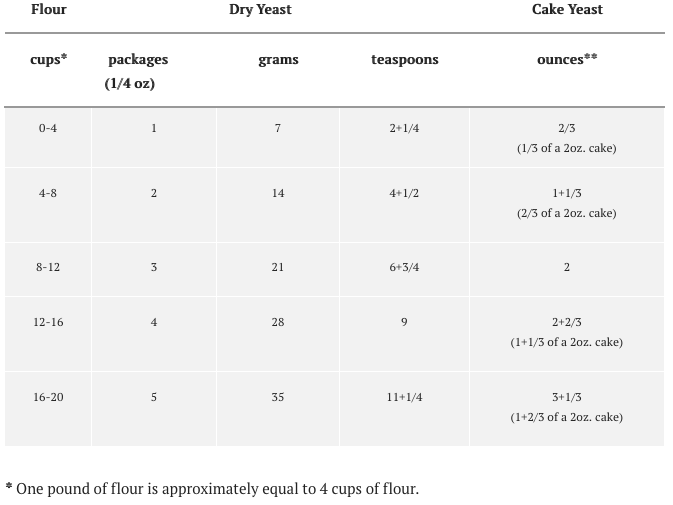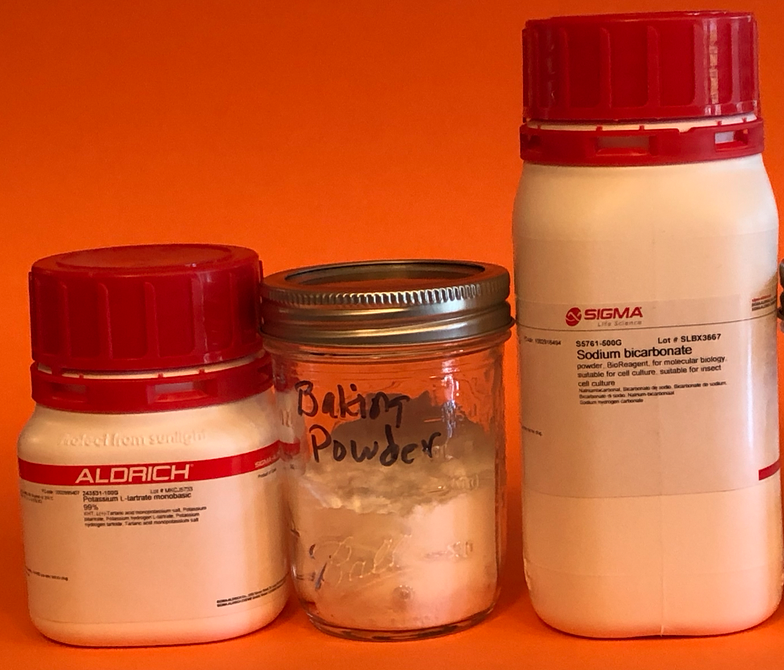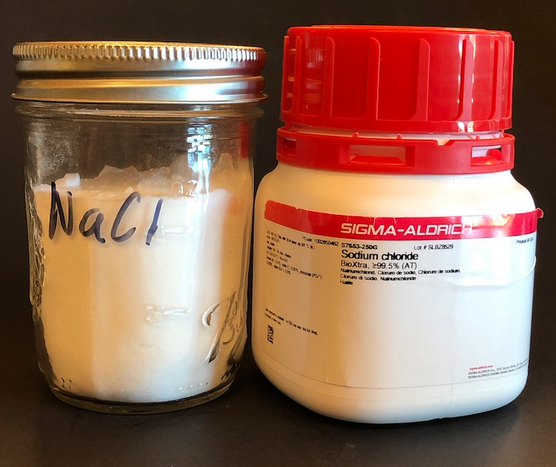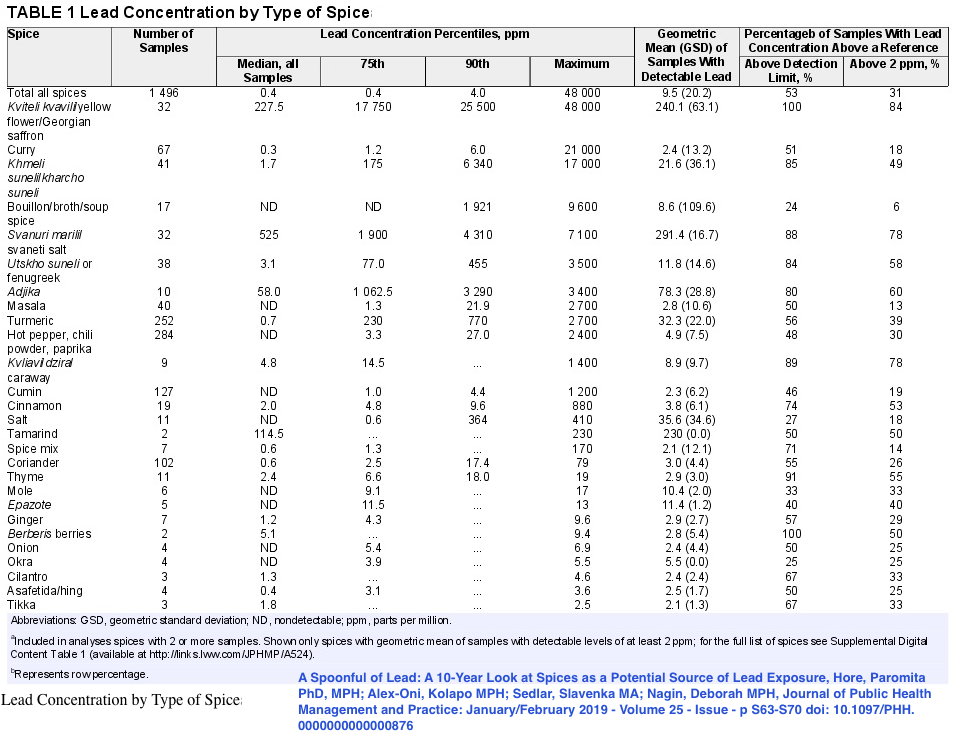Herbs and Spices have a history of high concentrations of BPA and phthalates. Therefore, even though they are used in small amounts, they can have surprisingly high concentrations.
This ad-free article is made possible by the financial support of the
Center for Research on Environmental Chemicals in Humans: a 501(c)(3) non-profit.
Please consider making a tax-deductible donation for continued biomedical research.
Why are spices contaminated with plastic chemicals?
There many reasons to account for for the high levels of BPA and phthalate contamination in herbs, spices and in other additives that are used in small quantities such as salt, yeast, baking powder, and sodium bicarbonate.
To begin, it’s necessary to understand that herbs and spices are, on the whole, small leaves, parts of flowers, portions of fruiting bodies, grain, seed and and nut-like plant components that frequently require extensive hand-manipulation in harvesting, flavor component extraction, processing and storage. Those processes require extensive use of plastics which can leach environmental chemicals and shed tiny micro- and nanoplastic particle.
In addition, herbs and spices come from many relatively small producers whose agricultural practices are generally unknown, inconsistent from place to place and largely unregulated. All of those stages involve plastic packaging and processing involving grates, conveyor belts, transfer funnels, tubing and other processing equipment made plastic or unknown materials.
In the supply chain — also heavy users of plastic — products from many small producers are aggregated until there is an amount that is sufficiently large to ship to warehouses where they may be comingled with other producers before sale to a large company that repackages them for consumer sale.
End-user packaging is frequently made of plastic bottles or packets. Spices offered to consumers in glass usually have plastic as the previous container material.
Boutique spice stores are no different. The bulk spices they purchase for packing in glass have arrived in plastic bins or large bags.
In addition, finely chopped or ground spices have much larger surface areas than the original plant parts.
That larger total surface area offers far more exposure to plastic and other contamination. Finely chopped or ground spices work their flavor magic in foods. But the size reduction that enhances flavor components to migrate out from an herb or spice substrate, also assists in the absorption of contaminants.
BEST PRACTICES: Obtain spices and herbs as close to the source as possible. If source purity transparency is uncertain, grow your own.
Plastic chemicals contaminate other “powerful in small doses” food components
As noted in the chart, above, Bisphenol A has also been measured in yeast and baking powder. While small, those amount still contribute to the overall food contamination load of humans.
Yeast and baking powder perform similar tasks in baking: the production of carbon dioxide to form bubbles in the dough and make it “lighter.”
Yeast is a living organism that — like humans — exhale CO2 as a result of metabolism. Yeast is relatively slow acting and takes hours to properly form a loaf for baking. It forms fine bubbles that offer a lighter texture.
Baking powder, on the other hand, works quickly and is used in cakes, waffles and breads where modest rises in the dough produce a desired density.
Baking powder is a 2:1 mixture of cream of tartar (Potassium L-tartrate) and baking soda (Sodium bicarbonate).
When water is added to baking powder, the cream of tartar turns the liquid mixture acidic. That acidity then starts a chemical reaction with the baking soda to form the desired carbon dioxide. Baking soda can also be used alone in a mixture containing acidic liquids such as buttermilk or citrus juices.
BEST PRACTICES: To avoid plastic contamination in baking, avoid yeast and commercial baking powder or baking soda. Instead, compound your own baking powder using reagents purchased from a reputable laboratory supply company: two parts (by weight) cream of tartar to one part Sodium Bicarbonate. Depending on the particular recipes in a dietary intervention menu, it may be advisable to experiment with different ratios of compounds before the intervention to assure proper outcomes in the finished product.
NOTE: Because laboratory reagents eliminate possible confounding factors caused by anti-clumping chemicals, iodine fortification in salt and other undisclosed chemical contaminants added during processing and packaging.
Salt of the Earth: Microplastic contamination from the Himalayas to the bottom of the sea
Microplastics in salt, fish and seafood are almost impossible to avoid. A review published in 2019 noted that microplastics were found in 128 salt brands from 38 different regions and countries. This includes kosher, Himalayan and other popular culinary salts.
How salt the world’s highest peaks could become contaminated by plastic is explained by the fact that rain, snow, and the air we breath are also contaminated by microplastics. In addition, the extraction, processing, shipping and packaging of those all involve plastic contact just like all other varieties.
In fact, sea salt is so thoroughly contaminated that the global pattern of microplastics in commercial food-grade sea salt is used as an indicator of overall seawater microplastic pollution
In addition to exposure from salt, human exposure to microplastics has been measured as coming from consumption of: water (plastic bottles), alcohol (beer), seafood, sugar, honey, and air (breathing).
BEST PRACTICES: Given the near-ubiquity of salt in food — And the total ubiquity of microplastics in table salt — best practices require sourcing Sodium Chloride from a reliable reagent company.
BEST PRACTICES: When developing a menu, avoid selecting fish and seafood. Regardless of the source, it is impossible to assess the quality of food and water that may have contaminated the edible portion.
Spices: Pound-for-pound expensive = incentive for adulteration
Spices were rare and exceedingly expensive commodities that once drove discovery, wars, conquests, colonies and global trade.
They remain — pound for ounce –among the most expensive culinary substances by weight or volume. That offers an incentive to adulterate. While some adulterations may involve the addition of heap and relatively harmless leaf or other fragments, an incentive exists to pass off poisonous compounds as a spice.
Lead, cadmium and other contaminants are surprisingly common as evidenced by more than 28,000 search results for this 2016-2020 Google Scholar search for lead.
One visible example of this the lead poisoning epidemic in Bangladesh caused by the addition lead acetate to tumeric to give it a bright yellow appearance. Tumeric adulteration has also been aggravated by the pop media interest in tumeric as an anti-cancer “superfood.”
The U.S. Food and Drug Administration issued a tumeric import alert in late 2019. That alert was one of many in 2019 for spices, flavors and salts.
Lead contamination has also been found in other common and popular spices including cinnamon, thyme, ginger, chili pepper, paprika, cumin, saffron.
Between 2008 and 2017, he New York City Department of Health and Mental Hygiene, conducted a study of lead contamination in more than 3,000 consumer products including 1,496 samples of more than 50 types of spices. More than half of the samples (n = 797) had detectable lead concentrations, and 31% exceeded the department’s reference limit of 2 ppm. Just under half of these were purchased in the United States. On the whole, those purchased in the United States were not lead-free, but had much lower concentrations.
BEST PRACTICES: If the origin of a spice cannot be traced to a known source free of contamination, grow your own and select menu recipes that can accommodate spice purity. In the case of two very common spices: black pepper and cinnamon: do not buy them pre-ground. Buy whole peppercorns and cinnamon sticks. Give them a quick rinse with carbon-filtered water to remove processing dust then immediately drain, pat dry and put in a dehydrator at 95 degrees F until dry. Then grind or grate as needed
References
Spice contamination
Unexpected results in a randomized dietary trial to reduce phthalate and bisphenol A exposures Sathyanarayana, S., Alcedo, G., Saelens, B. et al. Unexpected results in a randomized dietary trial to reduce phthalate and bisphenol A exposures. J Expo Sci Environ Epidemiol 23, 378–384 (2013). https://doi.org/10.1038/jes.2013.9
Yellow Dye in Turmeric Linked with Lead Poisoning in Bangladesh
Ground Turmeric as a Source of Lead Exposure in the United States
Timed release of turmeric stops cancer cell growth
Turmeric is promoted as an alternative cancer treatment
Concentrations of bisphenol A in the composite food samples from the 2008 Canadian total diet study in Quebec City and dietary intake estimates X.-L. Cao, C. Perez-Locas, G. Dufresne, G. Clement, S. Popovic, F. Beraldin, R.W. Dabeka & M. Feeley (2011) Concentrations of bisphenol A in the composite food samples from the 2008 Canadian total diet study in Quebec City and dietary intake estimates, Food Additives & Contaminants: Part A, 28:6, 791-798, DOI: 10.1080/19440049.2010.513015
Bisphenol A: Food Exposure and Impact on Human Health Almeida, S., Raposo, A., Almeida‐González, M. and Carrascosa, C. (2018), Bisphenol A: Food Exposure and Impact on Human Health. Comprehensive Reviews in Food Science and Food Safety, 17: 1503-1517. doi:10.1111/1541-4337.12388
